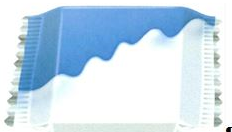U.S. Court finds Adidas’ Stan Smith shoe trade dress protectable
It’s game, set, match for Adidas when it comes to the protectable trade dress in its iconic Stan Smith tennis shoe. In a dispute between Adidas and Skechers over the “Skecherizing” of the Stan Smith shoe, the District Court for the District of Oregon denied Skechers’ motion for summary judgment finding that Adidas could show it has protectable trade dress in its well-known shoe design because the design was recognizable to consumers and not functional. Adidas America Inc. et al. v. Skechers USA Inc., D. Or (August 3, 2017) (order granting in part and denying in part motion for summary judgment).





